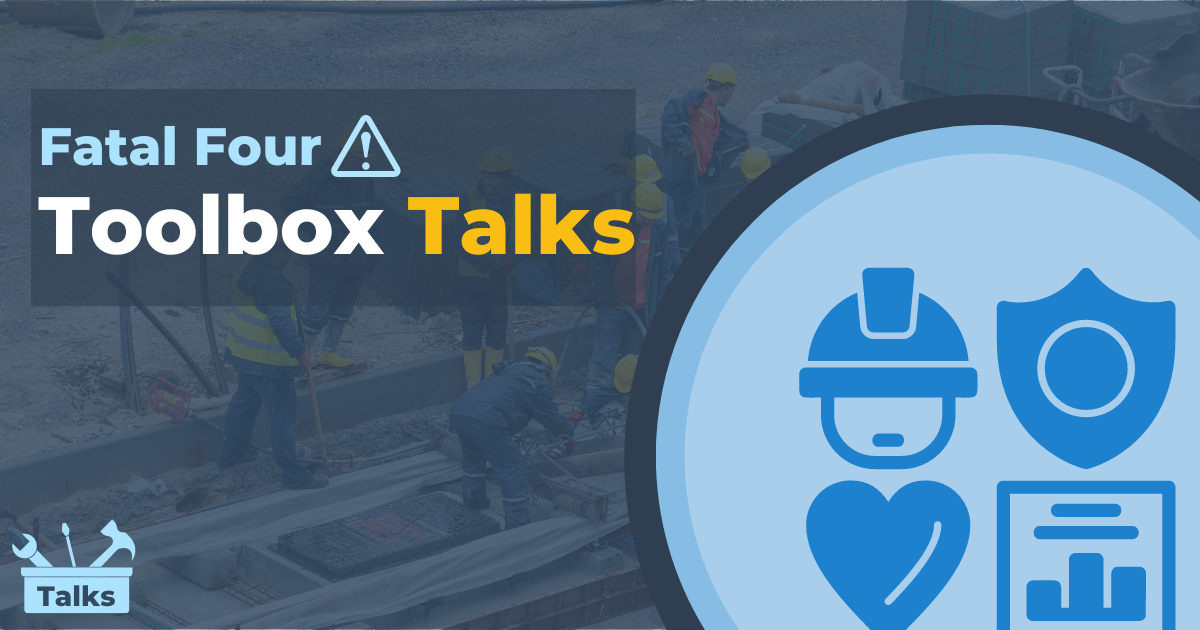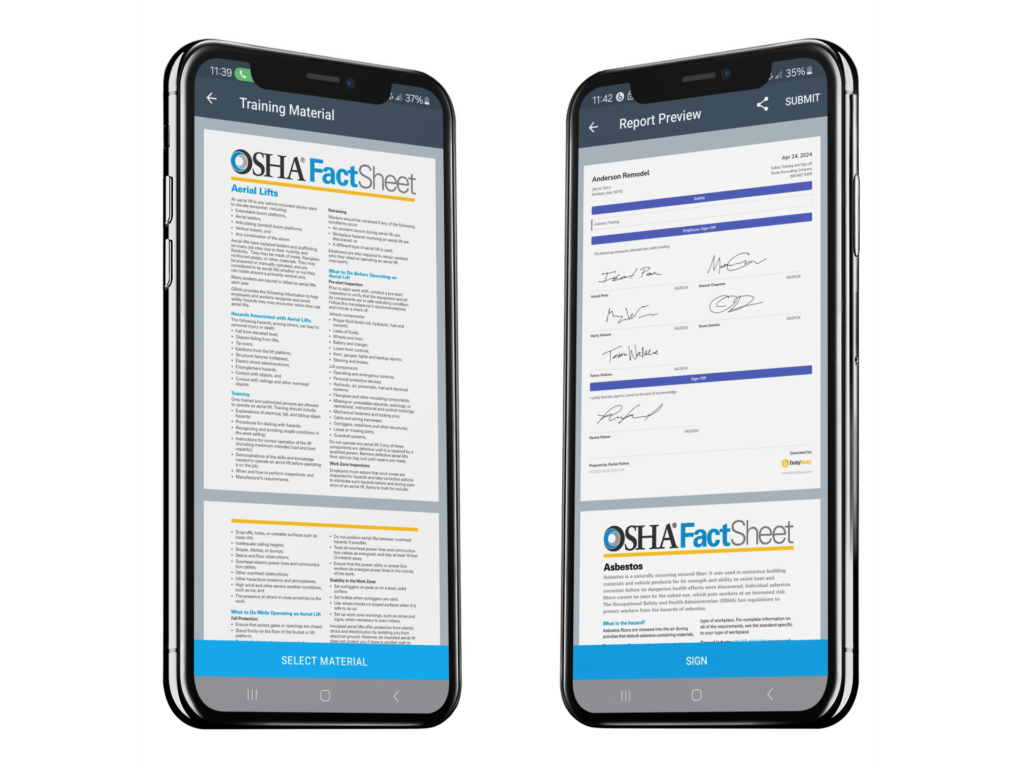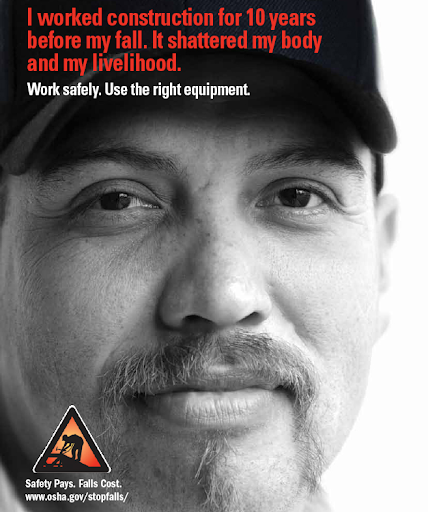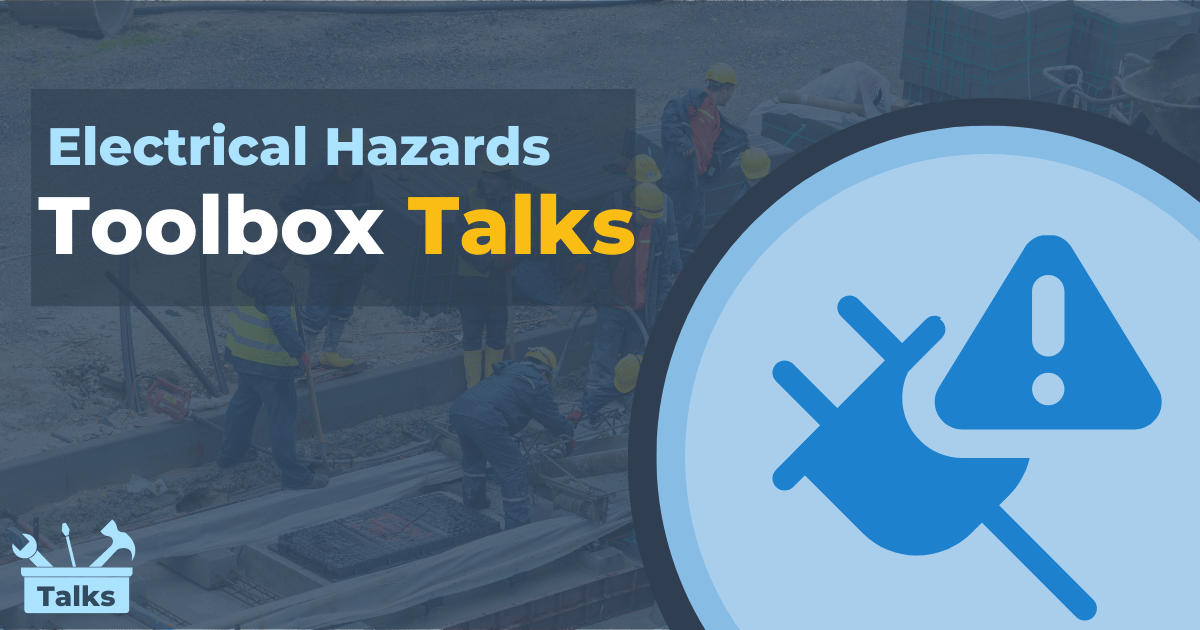
Construction sites are inherently hazardous environments, with workers facing a multitude of risks on a daily basis. Among these risks, the Fatal Four hazards stand out as the leading causes of construction-related fatalities. Learn how to prevent Fatal Four Accidents using preloaded Toolbox talks from the industry’s favorite app.
Did you know in 2022, there were 5,486 fatal work injuries? Highlighting the critical need for everyone in the industry to receive the training and knowledge necessary to return home safely.
Let’s work together to mitigate risks, safeguard lives, and create a safer environment for our family and friends diligently working in the construction industry.
Understanding Fatal Four Hazards in Construction
Construction sites are dynamic and complex environments where workers are exposed to a wide range of risks. It is crucial to understand the most significant hazards that lead to fatal accidents in the construction industry, collectively known as the Fatal Four.
The Fatal Four refers to falls, struck-by incidents, electrocutions, and caught-in/between accidents. Before diving into each of the leading causes of these life-ending hazards, let’s look at how employers can prevent them today.
How Employers Can Prevent Fatal Four Accidents
As leaders and organizers of construction projects, employers are responsible for implementing and enforcing comprehensive safety measures that protect their employees from all hazards. This includes providing proper training, implementing protection systems appropriately, and regularly inspecting equipment and work surfaces for potential risks.
Construction apps have been created to help disperse Safety Toolbox Talks to crews and streamline Incident Reporting. Preloaded Toolbox talks offer an effective platform for employers to address the factors contributing to the Fatal Four accidents in the construction industry. OSHA does not explicitly require Toolbox Talks by name, but they mandate that employers provide training and instruction to ensure that all workers know about the hazards they face in their jobs and how to prevent harm.
busybusy Time Tracking added a Toolbox Talk Library in field reports, enabling supervisors to create quick, efficient safety training sign-off templates. The safety presenter selects material from a preloaded Toolbox Talk library. After the briefing, supervisors can pass their phones around for employee signatures.

With the Toolbox Talk Library addition, busybusy empowers employees and employers by providing essential tools to enhance jobsite safety. This feature ensures that all personnel are well-informed and engaged in safety protocols, fostering a safer work environment.
Now let’s take a deeper look at the top dangers workers face every day on construction sites…
Falls: The Most Common of the Fatal Four
Falls are the most prevalent and significant hazard among the Fatal Four in the construction industry.
“Falls” refer to incidents where workers experience a descent from a higher to a lower level, resulting in fatal injuries. These falls can occur from various heights and locations on a construction site.
OSHA mandates fall protection for workers operating at heights of 6 feet or more or when working above hazardous machinery and equipment. Examples of fall protection include guardrails, safety nets, and personal fall arrest systems.
Main Causes of Fall Accidents:
- Lack of proper fall protection
- Unsafe working conditions
- Inadequate training
- Improper use of equipment
- Unprotected Edges and Openings
- Slippery or cluttered work areas
- Environmental Factors
- Human error
- Improper planning and supervision
- Failure to comply with safety standards
Quick Tips To Prevent Falls
- Utilize personal fall arrest systems correctly
- Establish and uphold perimeter safeguards
- Securely cover and label floor openings
- Operate ladders and scaffolds with caution
Struck-By Hazards: The Second Fatal Four Risk
Struck-by hazards occur whenever a worker faces the risk of being struck or impacted by an object.
Struck-by hazards pose a significant risk to construction workers and are one of the industry’s four leading causes of fatal accidents. Understanding the nature of struck-by hazards and implementing preventive measures is essential to ensuring the safety and well-being of construction crews.
Struck-by accidents can arise from various sources, including:
- Moving objects
- Falling objects
- Swinging or flying objects
- Collapsing structures
- Contact with equipment
Quick Tips to Prevent Struck By’s
- Avoid standing between moving and fixed objects
- Utilize high-visibility clothing around equipment and vehicles
- Use PPE (personal protective equipment)
- Remain vigilant in work areas
Electrocution Hazards: The Third Fatal Four Risk
Electricity is hazardous because it can cause electric shock, which occurs when an electrical current passes through the body. This can disrupt normal electrical signals in the body, potentially leading to heart fibrillation or stopping the heart altogether.
Additionally, depending on the current’s intensity and duration of exposure, electricity can cause burns, both externally and internally. Electrical currents can also ignite flammable materials, leading to fires or explosions posing significant risks in various work environments.
Electrical hazards cause more than 300 deaths and 4,000 injuries each year among the U.S. workforce.
Electrocution accidents can occur due to various factors, including:
- Contact with live electrical wires or equipment
- Overhead power lines
- Faulty wiring or equipment
- Wet conditions
- Lack of proper grounding
- Inadequate training on electrical safety protocols
Preventing Electrocution Accidents:
- Identify and mark overhead power lines
- Use ground fault circuit interrupters (GFCIs) for electrical equipment
- Avoid working with electricity during extreme weather
- Inspect electrical tools and equipment regularly for defects
- Provide comprehensive training on electrical safety practices
Caught-In/Between: The Fourth of the Fatal Four
“Caught in/between” accidents, as categorized by OSHA, occur when a worker becomes caught, compressed, or crushed between two or more objects. This type of accident often happens when a worker is caught in machinery or equipment, pinned between heavy objects, or squeezed between moving parts. These accidents can result in severe injuries or fatalities if not prevented or addressed properly and promptly.
Caught-in/between accidents are responsible for 5.4% of construction-related deaths.
Common scenarios that can lead to caught-in/between accidents include:
- Entanglement in machinery or equipment
- Collapse of trenches or excavation sites
- Being caught between moving vehicles or equipment
- Structural collapses or cave-ins
Preventing Caught-In/Between Accidents:
- Provide proper guarding on machinery and equipment
- Implement trench safety measures, including sloping, shoring, or shielding
- Establish clear communication protocols to prevent vehicle accidents
- Conduct regular inspections of work areas to identify and address hazards
- Train workers on safe work practices and procedures for avoiding caught-in/between incidents
Conclusion: Reinforcing Safety Measures to Prevent the Fatal Four
By continuously reinforcing safety measures through toolbox talks, construction professionals can foster a safety culture where workers are educated, aware, and proactive in identifying and mitigating hazards. Employers must prioritize safety training, provide adequate personal protective equipment, conduct regular inspections, and encourage open communication among workers to ensure safety remains a top priority on construction sites.
Remember, the goal is to eliminate the Fatal Four hazards entirely, as doing so would save countless lives and prevent numerous injuries in the construction industry. By understanding the risks, implementing preventive measures, and promoting a culture of safety, we can work together to create a safer construction industry for all workers.
Stay vigilant, stay informed, and stay safe!










